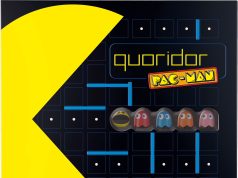 The circus has come to town. Grab your tickets. Don’t forget to pay the fees. Processing fee, service fee, print-at-home fee, convenience fee, time spent on the website reading the fees fee. Better yet, stay home and run your own circus.
The circus has come to town. Grab your tickets. Don’t forget to pay the fees. Processing fee, service fee, print-at-home fee, convenience fee, time spent on the website reading the fees fee. Better yet, stay home and run your own circus.
Dreadful Circus is an auction, set collection, and bluffing game for four to eight players. Games last between 90 and 120 minutes. The more the merrier.
Gameplay Overview:
In Dreadful Circus, players start the game with a hand of cards, some random contracts, and 6 coins. There are two types of cards. Attraction Cards get played into players’ tableaus, adding to sets, providing special abilities, and contributing to end-game scoring. Performance Cards give players one-time actions, such as stealing a card or gaining additional resources. At the start of the game, a player forms their tableau by playing one Attraction Card from their hand.
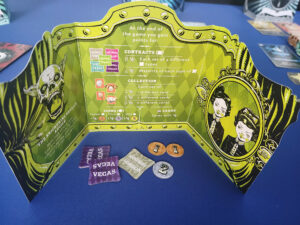
Every round, one to two players (depending on player count) will choose a card from their hand and put it up for auction. All players will then secretly place any combination of coins and contracts into their wagon, then place their closed wagon in front of the card they are bidding on.
The seller(s) will choose one of the wagons to view, then decide if they want to take the offer inside or forfeit that bid permanently. This continues until the seller accepts an offer or rejects every offer on the table. If a player’s offer is accepted, they will play their card into their tableau or for its one-time action, depending on the card type before moving on to the next round. The seller keeps what was inside the wagon they accepted.
Play continues until all players have only three cards left in their hands. At that point, every player plays one more Attraction Card from their hands, then scoring begins.
Players score points based on sets of contracts collected, sets of tableau cards, end-game scoring cards, and coins. The highest score wins the game.
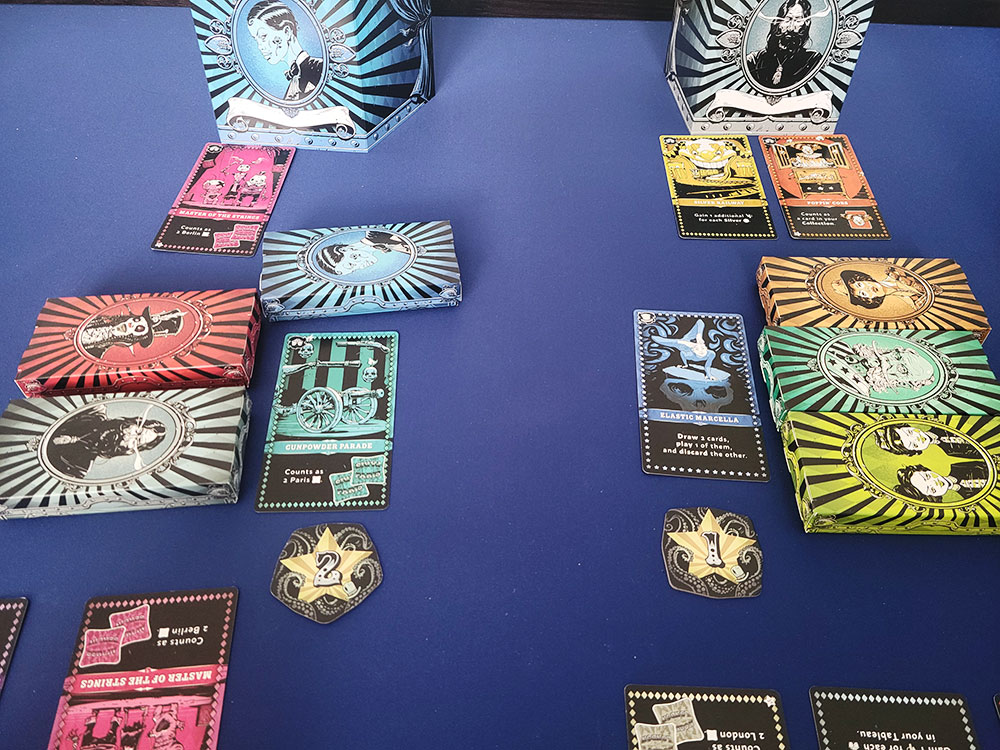
Game Experience:
Dreadful Circus promises a very social experience and delivers on that. Players will be drawn into lots of table talk, banter, negotiating, and trash-talking. Most of that is funny. There will be some temporary alliances, favors owed, and even backstabbing.
Underneath that fun and social dressing, you won’t find much here. The gameplay itself is majorly flawed. A major attraction of the game is the auction system, which is unlike others I have seen. However, it’s either not as good of a system as it sounds or it’s poorly executed in this game. It sounds like fun to coerce sellers into opening your bid first if it’s good or later on if it’s not so good. In execution, it doesn’t work and leads to arbitrary and frustrating results.

You see, beyond your words, you have very little to bargain and negotiate with. Outside of a few exceptions, players will have no idea what you have and what would benefit you. So, it breaks down to a simple guess at who’s doing well. You don’t want to let them win another card, so maybe you ignore them for the most part. Couldn’t that player just put more in their wagon? Therein lies another fundamental issue with the game. Cards provide little relative value to the coins and contracts you bid. That means the margin between a good bid and a bad bid is usually about one token. A winning bid often pays over value for the card unless they specifically have contracts the seller wants.
One meta that can develop is for sellers to just start naming their price. Besides that just not being fun, players will quickly call their bluff. Oh, you need a gold and a Vegas contract? Best I can do is a copper and a Praha contract. You can take that or take nothing and advance the game in no meaningful way.
A blind bidding system like this just doesn’t make sense in a game where so much information is hidden. It’s difficult to know what people have and what people need. Add on top of that a convoluted way of evaluating offers, and it just makes everything feel random. If theoretically, a player was laser-focused and had a photographic memory, they might have some idea of how valuable things are to other players. Even then, you may never see the best offer or pass it up in hopes of something better.
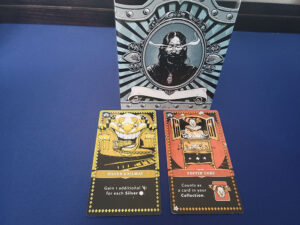
A player can go the whole game without having their offers seen for no fault of their own. That is a broken game in my opinion. Losing is very frustrating in this game and winning hardly feels better. I won every game of this I played. Here’s the thing, I have no idea why. I don’t feel like I played better, made better decisions, bid more cleverly, etc…
Another facet that was not well thought out was the scoring. There are these collection cards. Four different types. Each set of different collection cards gets you points, depending on how large the set is, you get 2, 5, or 9 points for each set. First of all, this was poorly explained in the rulebook. It took me several reads to know what they meant. The pictures in the book make it more confusing. Beyond that, it’s just silly. You will be lucky to even see three of these auctioned off throughout the game. To make them even remotely worthwhile, you’d have to really devote your strategy to them.
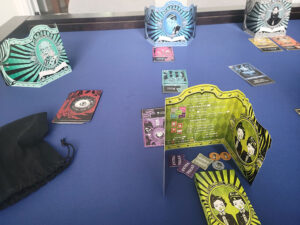
First, you’d need to have them in your starting hand and commit to them with your starting play. Remember when I talked about exceptions to not knowing what others have and what they need? This is an exception. If you’d played two of these into your tableau, sellers will either not put any more up for auction or they will not consider your offer. Your only hope would be to overpay for one and somehow get the seller to look at your offer. All for a few extra points at most. Just silly.
At least a couple of rounds before the game is over, players will start asking for a reminder of when and how it ends. The game moves at a decent enough pace, but it goes on and on without much evolution. The box time is a terrible estimation, especially when it’s supposed to be a laid-back, social game. The luck involved with starting hands can be mitigated by a draft, but that makes the game even longer.
Final Thoughts:
The art and style of this game are great. I really wish it had a better game to go with it. The wagons are poorly constructed and need tape to work well. They could have saved effort and space by just using pouches or something.
This game is not quite dreadful, but it’s not good. While they did accomplish making a game that creates a lot of talk, they didn’t build a good game system around it. These days, there are plenty of games that do both. This one is an easy pass for me.
Final Score: 2 Stars – A broken game that leans heavily on social interaction that can be found elsewhere.
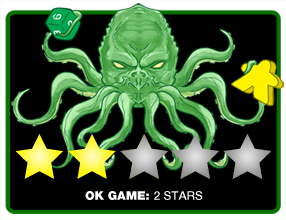 Hits:
Hits:
• Art and graphic design are very appealing.
• Gets players talking and interacting.
Misses:
• Too much hidden information to make logical decisions.
• Arbitrary method of evaluating bids.
• Scoring, especially collections, is not well thought out.
• Outstays its welcome.










